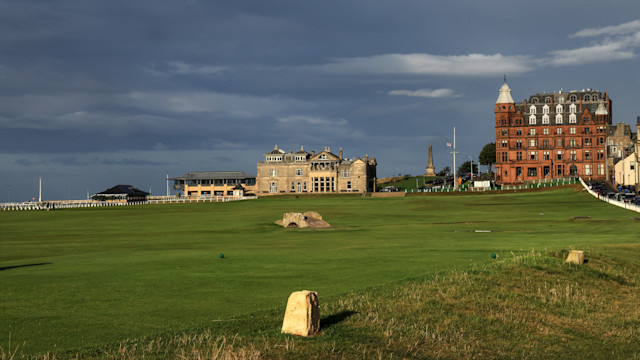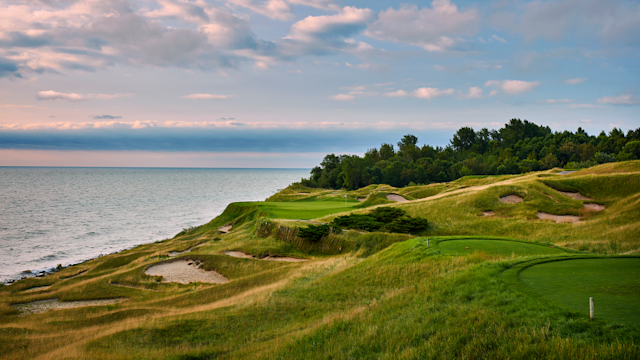Course Spotlight
The Ultimate Guide to the Pete Dye Course at Indiana's French Lick Resort
By Brendon Elliott, PGA
Published on
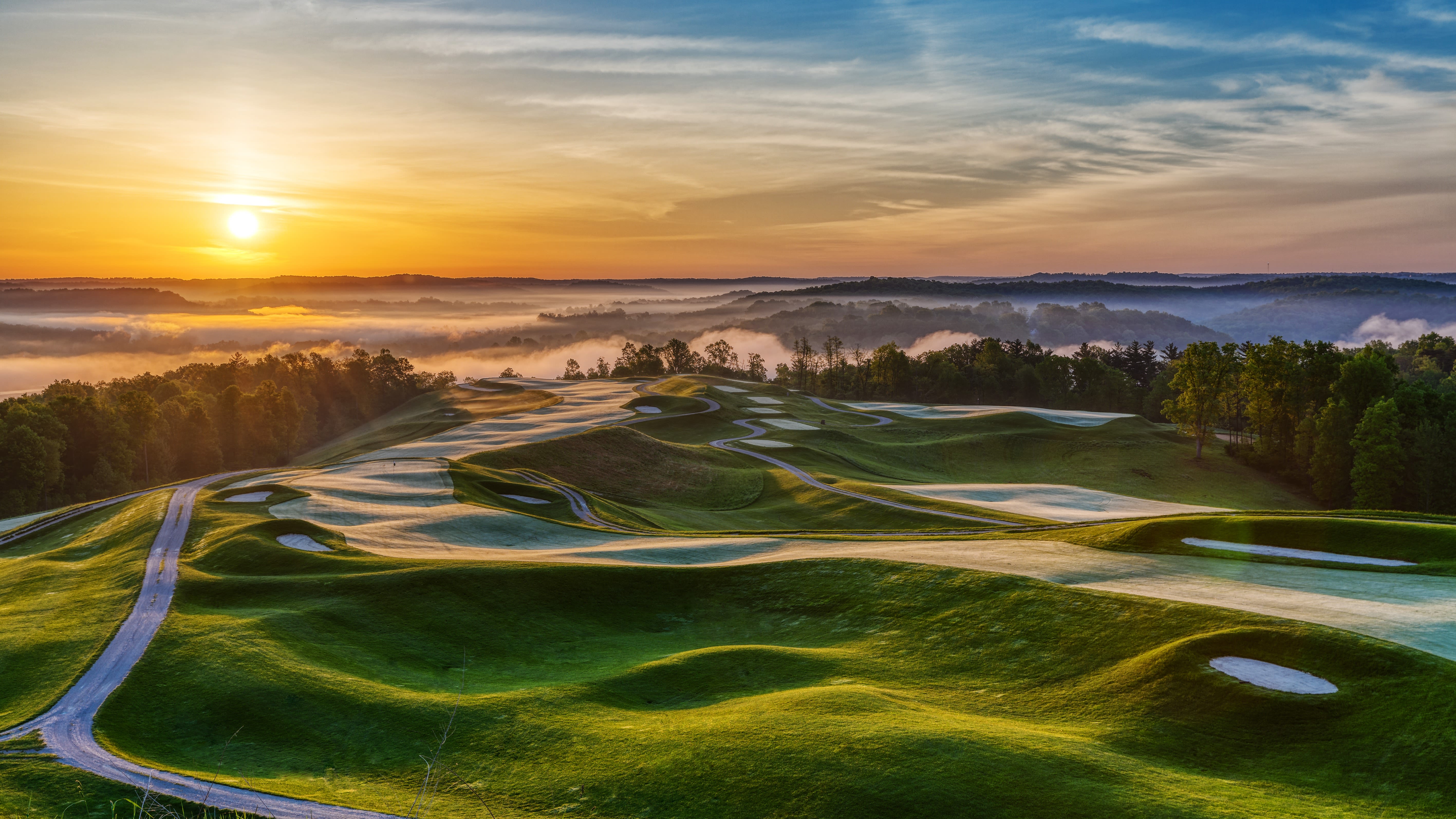
Pete Dye didn't just design golf courses. He carved experiences into landscapes that golfers either loved or loved to hate.
That's what people will find with The Pete Dye Course at French Lick Resort in Carmel, Indiana. Yet whatever camp golfers are in, there's something special about this design.
Let's dive in... first a little bit more on Dye himself.
The Indiana native, who passed away in 2020 at age 94, built his reputation on courses that punished the careless and rewarded the strategic. His signature volcano bunkers, railroad tie bulkheads, and island greens became iconic features that influenced an entire generation of architects.
What made Dye special wasn't just his willingness to be difficult; it was his ability to make it work. It was his eye for drama. He understood that golf should be memorable, even theatrical. When he sketched his course for French Lick on a napkin at a nearby restaurant, he was already envisioning something that would use every inch of elevation the site offered. At 80 years old, most architects would be coasting on their reputation. Dye was still walking sites forward and backward, obsessing over sight lines and vistas.

The course at French Lick represents late-career Dye at his most confident. By then, he'd already designed Harbour Town with Jack Nicklaus, created the terrifying island green at TPC Sawgrass, and built Crooked Stick. He had nothing left to prove, which is precisely why the French Lick course feels so bold. It's the work of someone who knew exactly what he wanted to create.
The History of The Dye Course at French Lick
When the Cook Group purchased French Lick Resort in 2005 as part of a $500 million restoration project, they knew golf had to be central to the property's revival. The resort already had the Donald Ross Course, which was established in 1917 and hosted the 1924 PGA Championship. But to truly establish French Lick as a world-class golf destination, they needed something modern and spectacular.
They approached Pete Dye about a site on Mount Airie, the highest point in the county. Dye's first reaction? No way. The terrain was too severe, too rugged. The slopes were impossible.
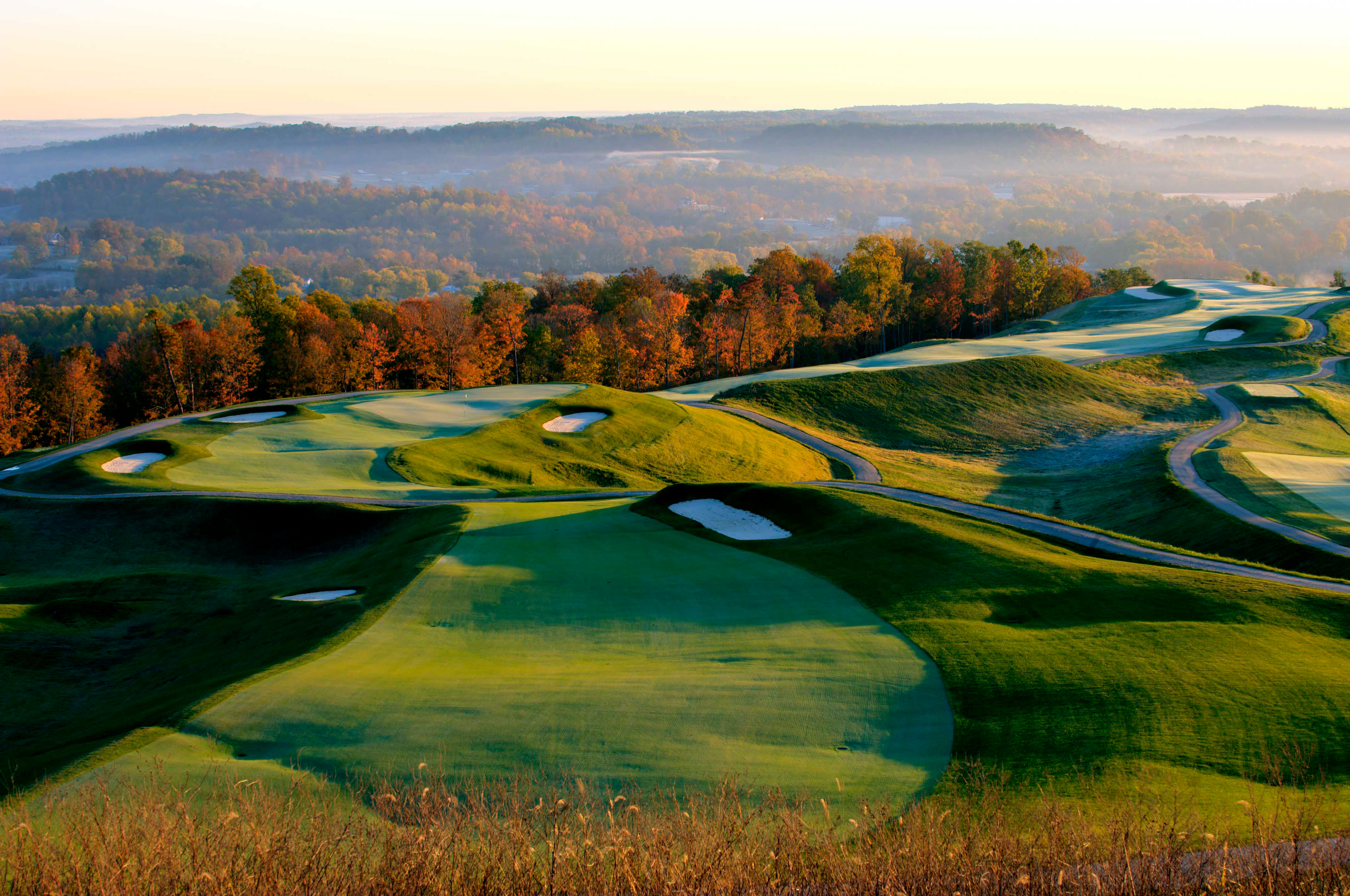
Then he changed his mind, and thank goodness he did.
The construction involved moving approximately 2.5 million cubic yards of earth across 300 acres. Dye called it "arguably the best inland site" he'd ever worked on. Considering his portfolio included courses from Scotland to the Caribbean, that's saying something. The project transformed Thomas Taggart's 1928 Colonial mansion into the clubhouse, adding another layer of history to the property.
When the course opened in June 2009, the accolades came immediately. Golf Digest named it America's Best New Public Course that same year. It's been ranked the #1 public course in Indiana by Golfweek for 14 consecutive years. In 2017, the National Golf Course Owners Association named it National Course of the Year. The course hosted the PGA Professional Championship in 2010 and the Senior PGA Championship in 2015, where Colin Montgomerie called it "one of the iconic courses" in America.
Every Hole Makes You Pause
The Pete Dye Course stretches to 8,102 yards from the gold tees, though five sets of tees starting at 5,151 yards make it playable for everyone. It's a par-72 layout with a slope rating of 148 from the tips. Numbers that tell you this course has teeth.
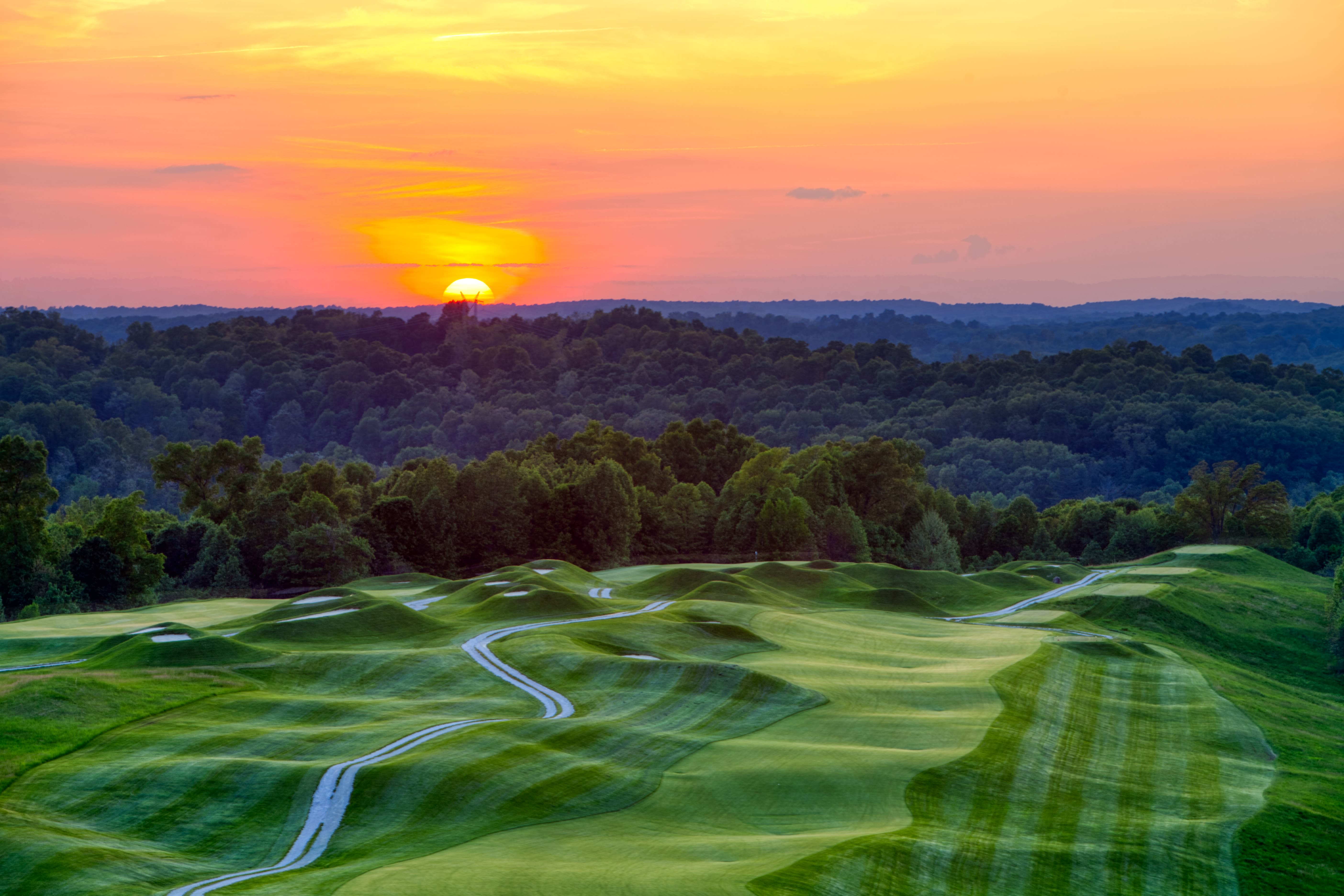
What defines the experience here are those 40-mile panoramic views of the Hoosier National Forest. Every hole offers vistas that make you pause, which is both a blessing and a curse when you're trying to focus on your shot. The course features three man-made lakes, narrow fairways that demand accuracy, and those trademark Dye volcano bunkers that look like they've been carved by ancient forces.
The elevation changes are dramatic and constant. You're playing on a hilltop, so shots play differently than you'd expect. The course rewards local knowledge and punishes assumptions. The greens are contoured and quick, with subtle breaks that aren't subtle at all once your ball starts rolling.
Dye incorporated rumpled chipping areas around the greens and country-lane cart paths that add to the course's character. The fairways are surprisingly roomy in places. Dye wanted you to be able to hit driver. But the approach shots demand precision. Miss in the wrong spot and you're facing a recovery that could wreck your scorecard.
Construction involved moving around 2.5 million cubic yards of earth across 300 acres. Dye called it "arguably the best inland site" he'd ever worked on. Considering his portfolio included courses from Scotland to the Caribbean, that's saying something.
The course isn't just difficult for difficulty's sake. It's strategic. There are risk-reward opportunities throughout, short par-4s that tempt you to be aggressive, and longer holes where patience is the only smart play. It's the kind of course that reveals more each time you play it.
The 2025 Korn Ferry Tour Championship
This week, the Pete Dye Course hosts the Korn Ferry Tour Championship. For the players competing, this is everything. It's the final tournament of the season, the last chance to earn a PGA Tour card. The pressure is immense, and the course won't make it any easier.
The championship moved to French Lick because the course can handle this level of competition. At over 8,100 yards with dramatic elevation changes and strategic complexity, it separates the players who can think their way around a course from those who just hit it far.
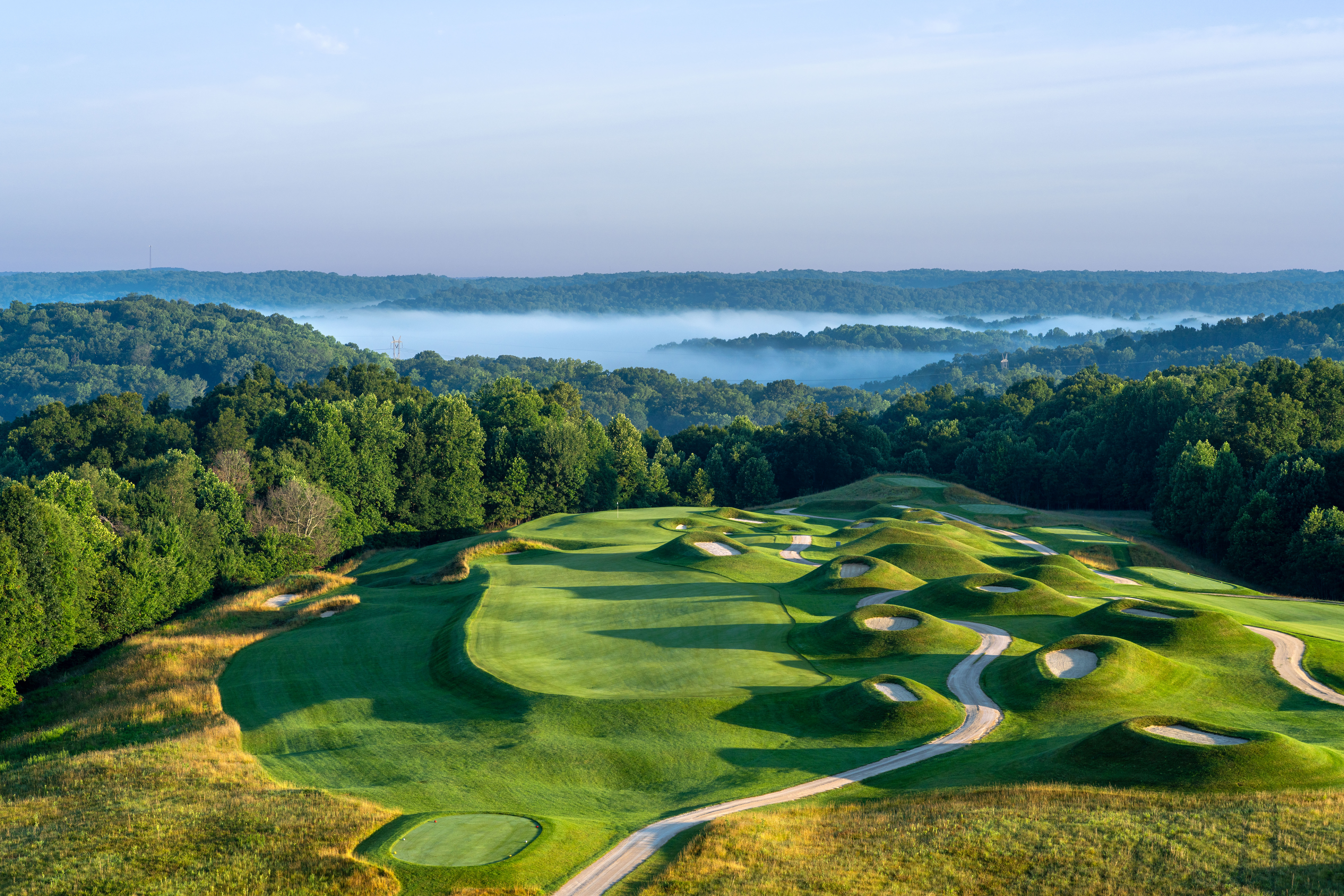
For spectators, watching championship golf on this course is a treat. The elevation provides natural viewing areas, and the dramatic terrain means you can see multiple holes from strategic vantage points. The course's beauty, combined with the high stakes of the tournament, creates an atmosphere that's both relaxed and electric.
The Pete Dye Course at French Lick proves that great golf architecture doesn't need to be ancient to be respected. Sometimes it just needs to be carved into the right piece of land by someone who knows exactly what they're doing.
PGA of America Golf Professional Brendon Elliott is an award-winning coach and golf writer. Read his recent “Playing Through” on R.org and his stories on Athlon Sports. To stay updated on his latest work, sign up for his newsletter and visit OneMoreRollGolf.com.

